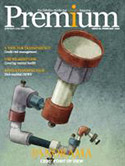SME: The Opportunity for Insurance

Despite the economic toll on SMEs, there is an opportunity for the insurance industry to grow within this sector while simultaneously providing essential coverage and security for the future, writes Ramzi Ghurani.
The COVID-19 pandemic isn’t just a public health emergency, it is also an economic crisis that is hitting small and medium-sized businesses exceptionally hard. Although often overshadowed by large enterprises, SMEs are the heartbeat of the world economy. Often positioned at the core of innovation and competitiveness, Small and Medium Sized Enterprises (SMEs) are responsible for a large proportion of job creation around the world. A pre-pandemic 2019 report1 by the Office of Advocacy indicated SMEs accounted for 44 percent of economic activity.
SMEs around the world continue to face the challenges of a lifetime. Within the insurance sector, we are provided with an opportunity to provide hope, a sense of security and protection against the unknown in the future, as we all continue to wade through the lasting ramifications of this unprecedented pandemic.
2020: The Impact
The brunt of the financial devastation of the pandemic continues to impact SMEs as they look towards the future with optimistic hope.
There were several ways the pandemic impacted the global SME sector in 2020. On the supply side, as workers became sick or stayed home with their children during extended school closures, companies experienced a reduction in the supply of labor. Additionally, extended measures to contain the disease through quarantines and closures led to further and more severe drops in consumer capacity, which often led owners to reduce their workforce. Supply chains were also interrupted, leading to shortages of goods and services, which also caused a downsized workforce.
On the demand side, a dramatic and sudden loss of demand and revenue for SMEs severely impacted their ability to function, causing severe cash flow challenges. As consumers experienced the loss of income, fear of infection, and heightened uncertainty, they dramatically reduced their consumption of goods and services. In many cases, local restrictions made it impossible for in-person consumption. This loss of income, dramatically impacted SMEs around the world.
2020 Global SME Statistics
For the most part, the full impact of the pandemic on SMEs has yet to materialise. However, data from around the world provides a basic insight into SMEs’ struggles around the globe.
Research conducted across several countries during the initial stages of the pandemic in 2020 showed:
- Mena Region and Turkey (2020): 79 percent of SMEs surveyed in the MENA region and Turkey indicate that their company’s overall experience during the pandemic has been negative2. Over half of those surveyed believe their companies would not survive more than four months and 85 percent believe they would not survive more than a year without support3.
- Mena Region and Turkey (2020): more than half of SME owners surveyed have reduced their own salary or scaled back on services (56 percent)4. Nearly half (47 percent) have had to lay off staff temporarily, request a payment suspension, and/or reduce or stop wages for staff5.
- United States (March 2020): Covid-19 impacted 96 percent of SMEs in the US by March 20206.
- United Kingdom (April 2020): approximately 40 percent of SMEs were planning on laying off 75-100 percent of their staff the following week.
An additional survey of 30,000 small business leaders from across 50 countries by the OECD also provided insights into just how devastating the toll of the pandemic was in 2020 for SMEs around the world7. The survey found:
- Between January and May 2020, over one-third of all SMEs surveyed were closed for an extended period of time.
- One-third of SMEs surveyed needed to reduce their workforce.
- Almost two-thirds of the SMEs surveyed experienced reduced sales compared to the year before the pandemic.
The Path Forward for SMEs
Despite the challenges throughout the pandemic, most research indicates SMEs are resilient and optimistic about their post-pandemic future:
- A survey by Verizon Business showed 68 percent of SMEs expect to recoup their Covid-19 related losses8.
- 80 percent of Australian companies feel optimistic that their businesses will be able to bounce back effectively from the difficulties they have experienced during the pandemic9.
- Approximately three-quarters of SMEs that were closed at the time of completing the OECD survey were optimistic about re-opening once the restrictions are lifted10.
Planning for the Unexpected
If the pandemic has taught us anything, it’s that we all need to plan for the unexpected. Despite these challenges, the SME sector still remains an opportunity for the insurance industry. Now more than ever, SMEs are investing in extensive insurance coverage to protect their interests. Among the top plans are Business Interruption extensions and from an insurance provider’s perspective, there is a great opportunity.
Protecting Businesses
Business protection insurance is designed to replace any business income lost during an unexpected closure resulting from an insured peril. While the current global pandemic is not currently covered by many insurance carriers there is an opportunity for providers to include this as an option in future business interruption plans.
The opportunity and foresight is there to make a win-win offering instead of excluding it in the future. This is our chance to prove to the world that we are right by the side of businesses and SMEs during difficult times.
Technology
Now more than ever technology is the key driver for efficiency. Technology provides an opportunity and solutions for SMEs to minimise costs while working at a more productive pace. There are a multitude of solutions that are key to business and customisation is the key. This can be looked at from a B2B and B2C perspective. If insurance professionals are not sure what to do, then now is the time to seek consultancy to ensure they hit the spot for a particular niche. The time is now.
Income Protection
As we witnessed during the pandemic, many frontline and essential workers contracted the COVID-19 virus. Income protection insurance would provide regular income until said

Ramzi Ghurani, managing partner, Petra Insurance Brokers
employees were able to return to work. Income protection insurance provides long-term coverage designed to ensure employees receive regular income in the event they become injured or ill. Unlike other plans that offer a lump sum payment for an unfortunate event, income protection serves as a source of replacement income while they are sick/injured. In the event of an employee’s death, the plan provides regular income to the family of the deceased.
Insurance and SMEs
While we all recognise that this has been an incredibly challenging year for SMEs, there is a light at the end of the tunnel. With vaccination programs extending around the world, we are cautiously and optimistically approaching the road that returns to “business as usual.” Businesses are now more aware of the need to protect their interests in the event of the unknown.
Although SMEs continue to navigate their cash flow and expenses, they recognise the need and value of investing in the right insurance policy to protect their interests. As leaders in the insurance sector, we need to continue to educate and communicate with SMEs on the necessity and benefits of protecting their businesses today and into the future. Likewise, we are also given the opportunity to package and price new insurance solutions to meet the unique needs of SMEs around the world.
As more countries reach herd immunity with vaccinations, we may see a return to pre-pandemic consumer trends where SMEs benefit from pent up demand, especially in the areas of tourism and hospitality. In the meantime, the insurance sector can offer protection against many of the challenges SMEs continue to experience during the pandemic.
References
1 https://advocacy.sba.gov/2018/12/19/advocacy-releases-small-business-gdp-1998-2014/
2 https://www.rand.org/pubs/research_reports/RRA607-1.html
3 https://www.rand.org/randeurope/research/projects/covid-sme.html
4 https://www.rand.org/pubs/research_reports/RRA607-1.html
5 https://www.rand.org/randeurope/research/projects/covid-sme.html
6 http://www.oecd.org/coronavirus/policy-responses/coronavirus-covid-19-sme-policy-responses-04440101/
7, 10 https://about.fb.com/wp-content/uploads/2020/07/Global_State_of_Small_Business_Report.pdf
8, 9 http://www.oecd.org/coronavirus/policy-responses/coronavirus-covid-19-sme-policy-responses-04440101/
Read More:





































